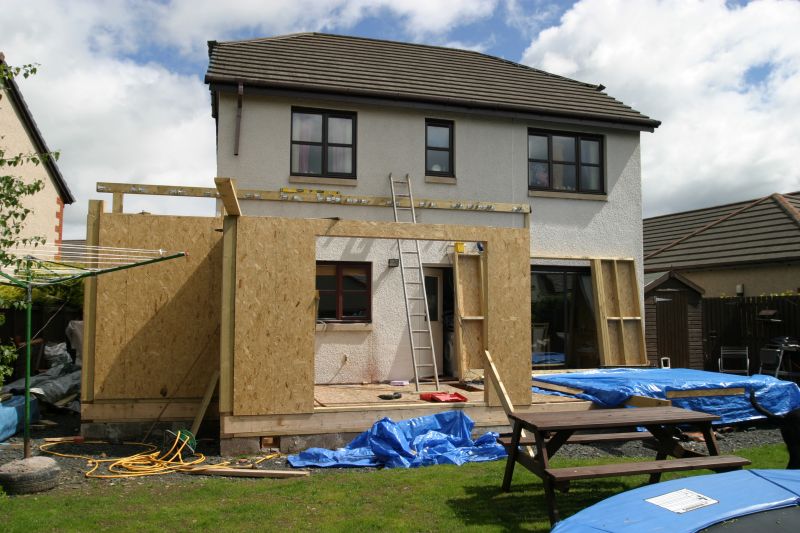Leading Construction Products for Home Expansion Tasks
Equip yourself with high-quality materials and tools that help you achieve professional results in home addition projects.
 Expanding a home through an addition requires careful selection of products to ensure structural integrity, safety, and functionality. From foundational materials to finishing touches, each component plays a vital role in creating a seamless extension of your living space. It is important to consider durability, compatibility with existing structures, and ease of installation when choosing products for a home addition.
Expanding a home through an addition requires careful selection of products to ensure structural integrity, safety, and functionality. From foundational materials to finishing touches, each component plays a vital role in creating a seamless extension of your living space. It is important to consider durability, compatibility with existing structures, and ease of installation when choosing products for a home addition.
Top Overall Option
Structural Building Support System
A comprehensive structural support system that includes beams, columns, and load-bearing elements designed for home additions. These components are engineered to provide stability and safety, accommodating various architectural styles and load requirements. They are adaptable to different construction plans and can be customized to fit specific project needs, making them a versatile choice for many home extension scenarios.
Types of Products For Home Addition Constructions
Lumber and Framing Materials
Essential for creating the structural framework of the addition, including studs, beams, and rafters.
Drywall and Wall Panels
Used to enclose interior spaces, providing surfaces for finishing and decoration.
Insulation Materials
Help regulate temperature and improve energy efficiency within the new space.
Roofing Materials
Includes shingles, metal panels, and underlayment for weatherproofing the roof of the addition.
Exterior Siding
Protects the outer walls and enhances curb appeal, available in various styles and materials.
Flooring Options
Range from hardwood and laminate to tile and carpet, suited for different rooms and preferences.
Doors and Windows
Vital for access, natural light, and ventilation, available in many designs and sizes.
HVAC Components
Includes ductwork, vents, and thermostats to ensure proper climate control in the new space.
Electrical Wiring and Fixtures
Supports lighting, outlets, and appliances, integral to functional living areas.
Plumbing Supplies
Includes pipes, fittings, and fixtures necessary for bathrooms, kitchens, and laundry areas.
Lighting Fixtures
Provides illumination and ambiance, available in styles suitable for various rooms.
Smart Home Technology
Includes security systems, thermostats, and automation devices for enhanced convenience.
Foundation Materials
Cement, concrete, and reinforcement materials essential for a stable base for the addition.
Soundproofing Materials
Help reduce noise transfer between rooms and from outside, improving comfort.
Paints and Finishes
Finish interior and exterior surfaces with paints, stains, and sealants.
Ventilation Systems
Ensure proper airflow and indoor air quality within the new addition.
Popular Choices
Simplify construction with ready-to-assemble framing components suitable for various projects.
Trending for their insulation properties and aesthetic versatility.
Popular for outdoor extensions, offering durability and low maintenance.
Used for foundations and walls, providing insulation and strength simultaneously.
Adding natural light to new spaces, enhancing ambiance and energy savings.
Increasingly popular for controlling climate efficiently within home additions.
Modern lighting option that is energy-efficient and unobtrusive.
Popular for connecting indoor and outdoor spaces with style and ease.
Trend for exterior cladding that offers durability and aesthetic appeal.
Increasingly favored for comfort, especially in colder climates.
Flexible interior partition options for creating functional spaces.
Convenient automation feature for garage extensions or conversions.
Trending for maintaining airflow and reducing heat buildup.
Popular for enhancing safety and curb appeal in outdoor spaces.
Essential for protecting foundations and basements from moisture intrusion.
Modern and functional options for interior access points.
Construction materials such as framing lumber, drywall, and insulation are fundamental to building a sturdy and comfortable addition. Structural supports like beams and columns must meet safety standards and support the weight of the new space. Roofing materials and exterior siding options also contribute to the overall durability and aesthetic appeal of the extension.
Interior finishing elements, including flooring, lighting fixtures, and doors, help integrate the new area with the existing home. Ventilation and HVAC components are crucial for maintaining indoor air quality and comfort. Electrical wiring, plumbing fixtures, and smart home integrations further enhance the functionality and convenience of the new space.
Planning for proper drainage, foundation stability, and insulation ensures the addition remains safe and energy-efficient over time. It is advisable to consult with professionals to select products that meet local building codes and best practices. Properly chosen products not only support a successful build but also contribute to the longevity and usability of your home extension.
Key Buying Considerations
- Compatibility with existing structures and materials
- Durability and longevity of the products
- Ease of installation and availability of professional support
- Compliance with local building codes and safety standards
- Energy efficiency and insulation properties
- Aesthetic match with the current home design
- Maintenance requirements and long-term upkeep
- Weather resistance for exterior products
- Cost-effectiveness over the lifespan of the addition
- Availability of warranties or guarantees
- Environmental conditions of the location, such as exposure to moisture or wind
- Flexibility for future modifications or expansions
- Compatibility with smart home systems if applicable
- Weight and load-bearing capacity for structural components
- Soundproofing and acoustic insulation needs
This content contains affiliate links. We may earn a commission if you make a purchase through these links, at no additional cost to you.
